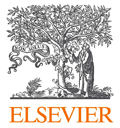Most studies examining episodic memory in Alzheimer's disease (AD) have focused on patients’ impaired ability to remember information, leading to poor discrimination between studied and unstudied items at test. Poor discrimination, however, can also be attributable to an abnormally high rate of false alarms. One cause of a high false alarm rate is an abnormally liberal response bias; that is, responding “old” too liberally to the test items. In the present study, discrimination and response bias were evaluated when participants were given a series of progressively longer study–test lists of unrelated words. As expected, patients with AD showed overall worse discrimination and a more liberal response bias compared with older adult controls. Critically, patients with AD also showed a more liberal response bias than older adults when discrimination was matched between the groups after performance was equated by giving the older adult controls a more difficult test than the patients with AD. This result confirms that the patients’ abnormally liberal response bias is not simply attributable to their poor discrimination. Correlation analyses suggest that the patients’ liberal response bias is related to the degree of their episodic memory deficit, which may in turn be related to the severity of their disease. Thus, our research suggests that as AD progresses two distinct abnormalities of episodic memory develop: worse discrimination and a more liberal response bias. Possible explanations of this liberal response bias in patients with AD are discussed.
Two patients each receive a score of 6 on the recognition portion of the consortium to establish a registry for Alzheimer's disease (CERAD) word list memory test (Morris et al., 1989), a test commonly used in clinical diagnosis of AD in which there are 10 studied and 10 unstudied words. The first patient correctly endorses only 6 of the 10 studied words and none of the unstudied words. The second patient correctly endorses all 10 studied words but also incorrectly endorses 4 of the unstudied words. Do these two patients have the same problems with their memory? The answer is likely no. The first patient shows a conservative response bias, that is, they responded “old” less than 50% of the time, while the second patient has a liberal response bias because they responded “old” greater than 50% of the time. Despite having the same recognition score, these two patients probably have different memory problems, which may be attributable to different anatomical and neurochemical dysfunction. Focusing on discrimination as the sole measure of memory performance would overlook such differences. In most clinical and experimental recognition memory tests, the rate of “old” responses to unstudied items (i.e., false alarms) is generally taken as a baseline false alarm rate and is simply subtracted from the number of hits (“old” responses to studied items) to obtain a corrected measure of recognition. To interpret these results however – especially in populations such as AD whose baseline false alarm rates are relatively high – it is critical to understand what factors contribute to the baseline false alarm rate. Most studies of recognition memory in AD have found that patients show higher rates of baseline false alarms to unstudied items than controls, but few studies have examined the causes of this outcome in patients with AD.
One such study by Snodgrass and Corwin (1988) found that patients with AD showed both poor discrimination and an abnormally liberal response bias compared with the control group. These results were in contrast to those of patients with amnesia due to mixed etiologies, who demonstrated a normal response bias despite showing the worst discrimination in the study. Bartok et al. (1997) also found that patients with AD showed a more liberal response bias as a group compared to controls.
Our previous studies in patients with AD and older adult controls examined false alarms to items that were semantically (e.g., Budson, Daffner, Desikan, & Schacter, 2000) or perceptually (e.g., Budson, Desikan, Daffner, & Schacter, 2001) related to the studied items. To begin our examination of response bias we first conducted post hoc analyses of these data from our laboratory to compare discrimination and response bias between the patients with AD and the older adult controls using d′ as a measure of discrimination and C as a measure of response bias. We choose these measures because Snodgrass and Corwin (1988) note that models of d′ and C demonstrate independence between discrimination and bias. 1 Greater d′ indicates greater discrimination; 0 indicates chance performance. Positive values of C indicate a conservative response bias, negative values indicate a liberal response bias, and 0 indicates a neutral bias. d′ was calculated by comparing “old” responses to studied versus unrelated, unstudied items. C was calculated using old responses to all item types (studied, unrelated unstudied, and related unstudied items). 2 These results, as can be seen from Table 1, show that in addition to worse discrimination (F(1,32) = 53.34, P < 0.0005), patients with AD also show a more liberal response bias (F(1,32) = 14.04, P = 0.001), compared to older adult controls.


